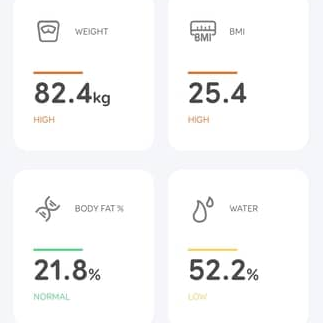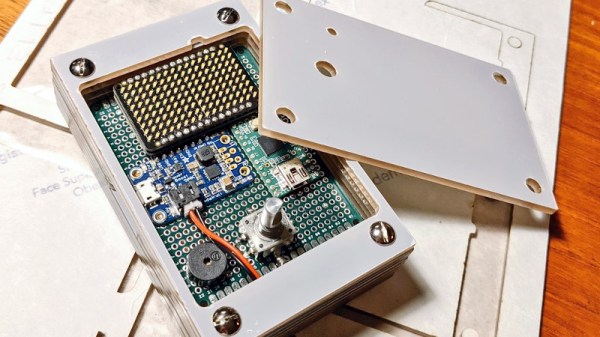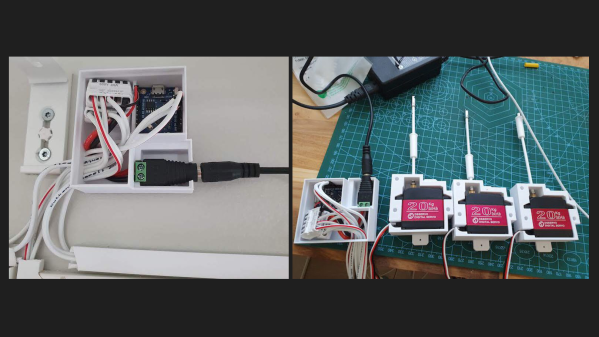Many of us have marveled at art installations that feature marbles quietly and ceaselessly tracing out beautiful patterns in sand. [DIY Machines] is here to show us that it’s entirely possible to build one yourself at home!
The basic mechanism is simple enough. The table uses a Cartesian motion platform to move a magnet underneath a table. On top of the table, a metal sphere attached to the magnet moves through craft sand to draw attractive patterns. An Arduino and Raspberry Pi work together to command the stepper motors to create various patterns in the sand.
Low-cost pine is used to build most of the table, with oak used for the attractive bare wooden top. RGB LEDs surround the sand surface in order to light the scene, with options for mad disco lighting or simple white light for a subtler look. Other nice touches include sitting the craft sand atop a layer of faux leather, so the ball moving through the sand doesn’t make annoying crunching sounds as the ball moves.
It’s a great build that focuses on the smaller details like noise that can make a big difference to the final experience. We’ve seen similar projects before, too. Video after the break.
Continue reading “Building A Kinetic Sand Art Table”



 First of all, while OCR can be reliable, it needs the right conditions. One thing that ended up being a big problem was the way the app appends units (kg, %) after the numbers. Not only are they tucked in very close, but they’re about half the height of the numbers themselves. It turns out that mixing and matching character height, in addition to snugging them up against one another, is something tailor-made to give OCR reliability problems.
First of all, while OCR can be reliable, it needs the right conditions. One thing that ended up being a big problem was the way the app appends units (kg, %) after the numbers. Not only are they tucked in very close, but they’re about half the height of the numbers themselves. It turns out that mixing and matching character height, in addition to snugging them up against one another, is something tailor-made to give OCR reliability problems.















